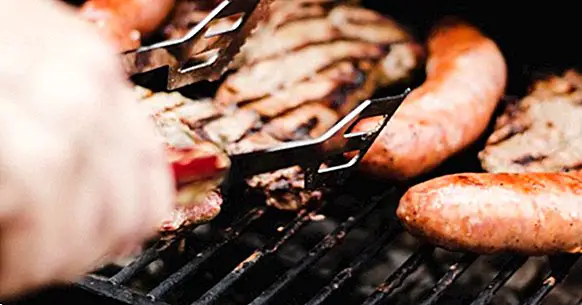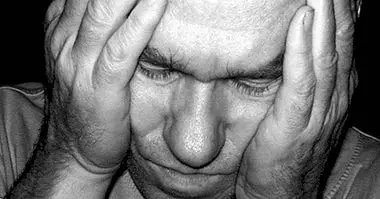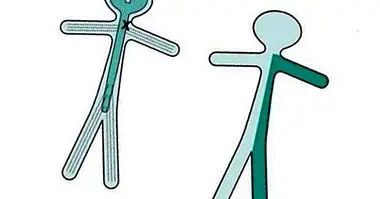Carnophobia (meat phobia): symptoms, causes and treatment
Carnophobia is characterized by a persistent and intense fear of meat . It is not necessarily accompanied by a political decision to abandon the consumption of this food, although it may be related to this.
We will see next what is carnophobia, what is the difference between a phobia and an aversion, and finally what are the remedies that exist to treat its symptoms.
- Related article: "Types of phobias: exploring the disorders of fear"
Carnophobia: fear of meat
As the name implies, carnphobia is the persistent and intense fear of the flesh. As long as it is a phobia, the persistent fear of meat must be presented irrationally or excessively, that is, it is a disproportionate fear of a stimulus that usually does not represent a danger for whoever perceives it.
In other words, to be considered a phobia, this fear of meat should not be manifested only as a decided rejection of the consumption of foods of animal origin, as could happen in the case of veganism or vegetarianism.
Neither is it an undeveloped taste for meat or a preference for a specific type of this food. It is rather a fear that is activated by any stimulus that approaches the flesh, triggering a disproportionate anxiety response .
However, if this fear does not manifest itself in a persistent, intense and disproportionate way, not significantly affecting the quality of life of the person, it may not be a phobia, but an aversion.
- Maybe you're interested: "The 5 types of meat, its properties and disadvantages"
Phobia or aversion to meat?
The main difference between a phobia and an aversion is the intensity of the fear experienced, and the manner in which it is presented. An aversion can be defined as a strong repulsion to touch, try or listen to things that most people are indifferent to or find pleasing (Bados, 2005).
Unlike a phobia, aversions produce discomfort, but not fear or anxiety; they present themselves before stimuli other than specific phobias and do not cause obsessions or rituals.
The aversions can cause a series of momentary physiological reactions such as the following: chills or bristling of the hair, pallor, cold, breathing wave , and sometimes nausea. They are common, for example, the aversions to the touch of the hairy surfaces like wool or pen; to hear squeaking sounds; or to smell and taste fatty foods, foods of certain textures, or muscular tissues of animal origin (meat).
In general, aversions do not negatively and significantly affect a person's quality of life, since they do not prevent them from carrying out daily activities, and they are not manifested by a clinically observable anxiety picture. However, they can represent significant discomforts to the stimulus that provokes the aversion.
Thus, if the exposure to the flesh causes discomfort and mild or momentary physiological reactions, then it is an aversion. On the contrary, if exposure to meat causes clinically significant discomfort (an anxiety that interferes with daily activities), and is presented persistently generating voluntary and involuntary avoidance of the meat, then it can be a carnphobia.
Possible causes
As with other phobias, a fear persists in the flesh may be caused by actual or perceived damage associated with the consumption of such food . Some concrete examples of experiences that can cause this fear are the following:
- A severe disease, generated immediately after consuming meat.
- A traumatic trip to a butcher shop or slaughterhouse.
- An accident while cooking meat.
- Adverse emotions related to images for or against meat products.
This may be the cause of having developed both a phobia and an aversion to meat, and the latter may have generated a political position on the consumption or industrialization of this food, although not necessarily.
Is treatment necessary?
Any real or perceived fear, which is experienced in a persistent and disproportionate way, can be treated through a series of clinical strategies. For example, the live exposure technique , cognitive restructuring, systematic desensitization or relaxation strategies, among others. All of them aim to reduce the experiences of anxiety associated with the stimulus that causes them; which ultimately means that the person develops a positive contact with the stimulus.
However, if the rejection of the meat is derived from a personal choice, which does not interfere with their daily life even if it implies an experience of aversion, the treatment should not aim to consume this food , but the search for alternatives and substitutes.
Bibliographic references:
- Rodríguez, U. (2012). Gastrofobias: all the fears of the world of food. Retrieved September 11, 2018. Available at //www.infonews.com/nota/37358/gastrofobias-todos-los-miedos-del-mundo.
- Bados, A. (2005). Specific phobias Factultat of Psychology. Departament de Personalitat, Avaluaciò i Tractament Psicològics. University of Barcelona.
- Fear of raw meat? (S / A). Perspecs. Retrieved September 11, 2018. Available at //www.perspecsnews.com/read/business/fear-of-raw-meat/rkxnikyGhz/rygKWvyf2f.



















